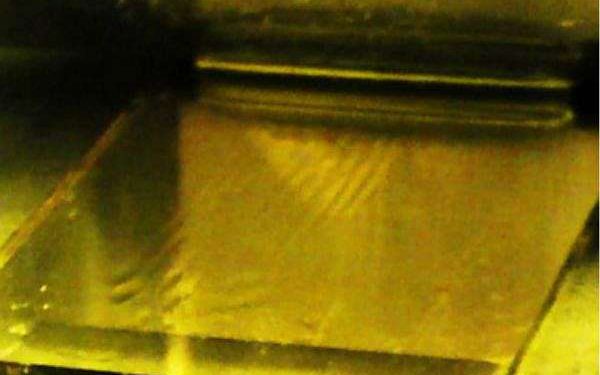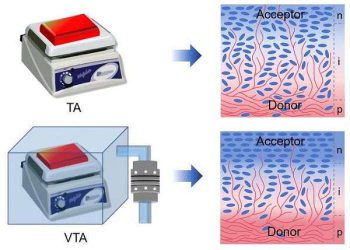Enhanced fluorinated interface layer extends lifespan and boosts efficiency of perovskite solar cells
by Robert Schreiber
Berlin, Germany (SPX) Nov 08, 2025
Perovskite solar cells are inexpensive and deliver high electricity output per surface area, yet they have lagged behind silicon standards due to stability limitations. An international collaboration led by Prof. Dr. Antonio Abate has enhanced perovskite cell stability by applying a novel fluorinated coating at the interface between the perovskite surface and the C60 top contact layer. This advancement has resulted in cells reaching nearly 27 percent efficiency, an industry-leading figure. Following 1,200 hours of continuous illumination, the cells showed no performance loss. The study joined teams from China, Italy, Switzerland, and Germany and appears in Nature Photonics.
Prof. Abate described how the fluorinated compound slides between the perovskite and buckyball contact layer, forming a nearly compact monomolecular film that chemically isolates the active layer. This barrier reduces defects and also improves the structural integrity and uniformity of the C60 layer. “It’s actually like the Teflon effect. The intermediate layer forms a chemical barrier that prevents defects while still allowing the electric contact,” Abate stated.
Much of the experimental work was performed by Guixiang Li during doctoral research with Abate’s team; Li now holds a professorship at Southeast University, Nanjing. The research also involved participants from EPFL and Imperial College London.
Lab tests revealed perovskite solar cells equipped with the new layer reached 27 percent efficiency, slightly above the 26 percent recorded without modification. The stability boost was substantial: continuous “standard sun” exposure for 1,200 hours resulted in no efficiency loss, whereas comparison devices lost 20 percent output after only 300 hours. The coating further enhanced thermal stability, surviving 1,800 hours at 85 C and 200 cycles from – 40 C to +85 C. The solar cells use an inverted (p-i-n) architecture, facilitating integration with silicon cells in tandem arrangements.
Abate said the concept for the intermediate film originated during postdoctoral work at Henry Snaith’s laboratory, focusing on pioneering perovskite research in 2014, when device efficiency was only 15 percent and declined rapidly. These new results mark progress toward highly efficient, robust optoelectronic devices using perovskite materials.
Research Report:Stabilizing high-efficiency perovskite solar cells via strategic interfacial contact engineering
Related Links
Helmholtz-Zentrum Berlin fur Materialien und Energie
All About Solar Energy at SolarDaily.com
















